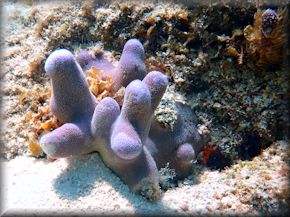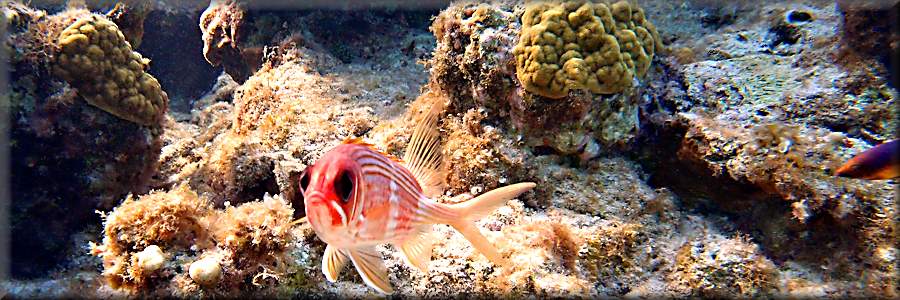How to Snorkel for Underwater Photography
Maximise your snorkeling dive time (part 1)
for 'U' shaped dives, go with the mammalian diving reflex
'V' or 'U' dives?
'V' dives involve a rapid descent, often directly down on a target fish, (which can spook it).
Then, a quick shot and a quick ascent. Dive duration is pretty irrelevant for this dive style.
Younger people seem good at this style with their easy equalising. Weights aren't as necessary.
Then, a quick shot and a quick ascent. Dive duration is pretty irrelevant for this dive style.
Younger people seem good at this style with their easy equalising. Weights aren't as necessary.
'U' shaped, especially a wide 'U', involves a longer dive, a calm descent (scaring the fish less), with
considerable photo time at the bottom of the dive.
There is time to equalise carefully on the descent. Here, dive duration is very important. And, weights are much more likely to be needed.
There is time to equalise carefully on the descent. Here, dive duration is very important. And, weights are much more likely to be needed.
'U' dives get the better photos overall. You see more when down, including under overhangs. Plus, is time to consider composition and light.
There is time for several shots. You may even alter the camera settings while submerged. But, the need for weights is a considerable downside.
There is time for several shots. You may even alter the camera settings while submerged. But, the need for weights is a considerable downside.
For good 'U' dives, go with the mammalian diving reflex
"The mammalian diving reflex optimizes respiration to allow
staying underwater for extended periods of time". Thanks
Wiki.
The part that shallow-diving snorkellers can benefit most from is slowing of the heart rate (bradycardia). The heart's pumping less, means less oxygen is being demanded by active muscles.
What not to do. Don't tense or use muscles unnecessarily. Each one signals to the heart the need for oxygen. The heart speeds up. We get the urge to breathe.
Some snorkelers do very little, finning gently, but moving along nicely (with slow hearts!).
Conversely, the 'headless' chickens have everything thrashing.
The part that shallow-diving snorkellers can benefit most from is slowing of the heart rate (bradycardia). The heart's pumping less, means less oxygen is being demanded by active muscles.
What not to do. Don't tense or use muscles unnecessarily. Each one signals to the heart the need for oxygen. The heart speeds up. We get the urge to breathe.
Some snorkelers do very little, finning gently, but moving along nicely (with slow hearts!).
Conversely, the 'headless' chickens have everything thrashing.
Their hearts are racing, yet they don't swim fast.
As an aside. Fish will scarper from the headless chicken type. To the fish, the calm guy isn't in hunting mode so is less scary.
Anxiety also causes the heart to race. To ease subtle anxiety, (not talking about panic here), focus on what is around you. Think about stuff to photo, the light and the composition.
When relaxed and focussed, only a few muscles are gobbling oxygen. The heart slows nicely.
Thinking about holding your breath, or the time you have been under makes you want to surface.
Forced, overdone, dive time risks shallow water blackout, described on the next page.
As an aside. Fish will scarper from the headless chicken type. To the fish, the calm guy isn't in hunting mode so is less scary.
Anxiety also causes the heart to race. To ease subtle anxiety, (not talking about panic here), focus on what is around you. Think about stuff to photo, the light and the composition.
When relaxed and focussed, only a few muscles are gobbling oxygen. The heart slows nicely.
Thinking about holding your breath, or the time you have been under makes you want to surface.
Forced, overdone, dive time risks shallow water blackout, described on the next page.
Being relaxed isn't extreme at all. It's just using the natural reflex to minimise oxygen use.
Obviously, surface when you get the urge.
 Don't hyperventilate ie take several deep breaths in a row, before the dive. It can be dangerous
as explained on the next page.
Don't hyperventilate ie take several deep breaths in a row, before the dive. It can be dangerous
as explained on the next page.
Obviously, surface when you get the urge.
 Don't hyperventilate ie take several deep breaths in a row, before the dive. It can be dangerous
as explained on the next page.
Don't hyperventilate ie take several deep breaths in a row, before the dive. It can be dangerous
as explained on the next page.


